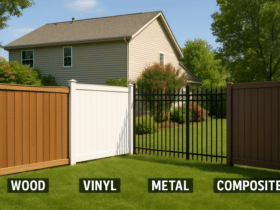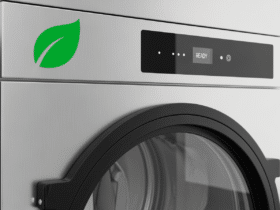Key Takeaways
- Why Regular Maintenance Matters
- Thermostat Strategies for Savings
- Air Filter Habits for Better Air Flow
- Not All Noises Are Equal: How to Listen to Your AC
- Boosting Efficiency with Home Insulation
- DIY vs. Professional: When to Call in Experts
- Keeping Cool While Saving Energy
- Resources and Recap
- Conclusion
Why Regular Maintenance Matters
Air conditioners play a crucial, often underestimated, role in daily comfort, especially during those unbearable heat waves. Like any hardworking machine, a cooling system requires attention to operate at its peak. Neglecting air conditioning care is a mistake that many homeowners make, leading to reduced performance, skyrocketing utility bills, and the dreaded mid-summer breakdown. The easiest way to prevent this is with routine upkeep. It’s smart to schedule seasonal inspections and to follow a regular cleaning routine, such as clearing away leaves, dirt, and yard debris from around the condenser and gently wiping down exposed parts.
While there are basic maintenance tasks you can complete yourself, nothing substitutes for professional AC maintenance services. These services go beyond surface cleaning, diving into the inner workings of your system to check for hidden wear, refrigerant levels, and subtle electrical issues that could escalate over time. Industry data support this pattern, showing that consistent maintenance avoids an average 5% to 15% efficiency loss year after year. That translates to meaningful savings, improved comfort, and fewer stressful emergencies.
Thermostat Strategies for Savings
In the end, taking care of your air conditioning system isn’t just about avoiding breakdowns—it’s about creating a comfortable, cost-effective, and energy-efficient home environment. From setting smarter thermostat schedules and replacing air filters regularly to listening for unusual sounds and improving insulation, each small step contributes to a larger payoff. According to the U.S. Department of Energy, using programmable thermostats effectively can significantly reduce energy usage and lower cooling costs. Regular maintenance, both DIY and professional, ensures your system performs at its best when you need it most. With a bit of attention and the proper habits, you can stay cool through every heat wave while keeping your energy bills in check and extending the life of your AC unit for years to come.
Air Filter Habits for Better Air Flow
Few homeowners realize just how critical a simple air filter can be to their HVAC system’s performance and their family’s health. Filters trap dust, pollen, pet dander, and airborne particles, ensuring that your living spaces stay cleaner and that the air flowing through your vents remains fresh. When filters clog, airflow slows, forcing your system to work much harder to move air. The extra energy consumed can quickly escalate energy bills while also introducing dust and allergens into living spaces. As highlighted in an NPR article on indoor air pollution, maintaining good indoor air quality often begins with simple measures. Yet, they make a profound difference in long-term respiratory health and comfort.
Replacing or cleaning filters is usually a breeze: just check once a month, especially during high-usage periods, and swap out dirty filters every 1–3 months. If you have pets, are allergy sufferers, or live in dusty environments, more frequent changes may be necessary. Consistency here pays off. Not only does regular filter care extend the lifespan of your unit, but it can also prevent common maintenance issues and reduce the need for professional intervention. The result is noticeably improved air quality, fewer allergies, and smoother-running equipment—all from one often-overlooked maintenance step.
Not All Noises Are Equal: How to Listen to Your AC
While modern air conditioners are designed to be as quiet as possible, every system makes some noise during operation—a gentle hum is usually a sign of normal function. Where trouble starts is with unfamiliar sounds, such as sudden clanking, buzzing, rattling, hissing, or screeching. Each of these odd noises can hint at developing problems within the system, ranging from loose screws and fan blades to refrigerant leaks or even something more serious, such as a failing compressor.
Early detection of these warning signs can prevent minor issues from turning into major repairs. Ignoring a grinding noise can lead to the need for replacing a costly part or the entire unit. Instead, use your ears as your first diagnostic tool. Regularly listen for anything out of place, especially during start-up and shutdown cycles. Immediate attention to unusual sounds is one of the most innovative ways to save on long-term repair costs and guarantee you aren’t stuck in the heat waiting for an emergency service visit.
Boosting Efficiency with Home Insulation
Even a perfectly maintained air conditioner can be undermined by poor home insulation. Cool, conditioned air escapes easily through unsealed windows, gaps in doors, or under-insulated attics. Meanwhile, outdoor heat seeps in, and your air conditioner works overtime to compensate. The good news is that boosting your home’s energy efficiency is often easier—and more affordable—than you might think.
Simple upgrades, such as adding weatherstripping to doors, sealing windows with caulk, and installing blackout curtains on sunny sides, can make a noticeable difference. Blackout curtains, for example, significantly decrease solar heat gain and relieve your system of the extra burden during peak hours. For homeowners seeking longer-term savings, insulating the attic or upgrading windows provides ongoing benefits, including more stable indoor temperatures and lower seasonal energy expenditures. Often, these are “set and forget” improvements, delivering benefits year after year.
DIY vs. Professional: When to Call in Experts
Not every AC hiccup means a service call is required—and not every problem is safe to tackle on your own, either. Homeowners can and should take steps like clearing grass, leaves, and dirt away from the outdoor unit, vacuuming vent covers, and checking the thermostat’s batteries. However, when it comes to anything involving electricity, refrigerants, or deep mechanical diagnostics, only qualified technicians should step in.
Unauthorized tinkering can void your system’s warranty and, more importantly, lead to safety hazards. Annual or semi-annual professional tune-ups keep all crucial components in check, offering peace of mind for the rest of the season. By balancing basic DIY upkeep with regular expert inspections, you can maximize reliability and avoid costly, inconvenient breakdowns. This approach empowers homeowners to control what they can while leaving specialized work to those with the proper training and tools.
Keeping Cool While Saving Energy
Achieving comfort and efficiency doesn’t have to be at odds. Simple, daily habits lend significant support to your AC’s efforts, often decreasing monthly expenses and extending system longevity. Running ceiling fans in conjunction with your cooling system can make the ambient temperature feel up to 4°F cooler, allowing for a higher—yet still comfortable—thermostat setting. The consistent use of blinds or curtains during hot afternoons can block unwanted heat from entering, while closing off unused rooms ensures every bit of cooled air is utilized.
Intelligent scheduling of household chores also helps. Ovens, dishwashers, and laundry appliances create excess heat, so plan to use them during cooler nighttime or morning hours. Prioritize exhaust fans after showers or cooking to remove humidity and heat swiftly. According to the American Council for an Energy-Efficient Economy, these habits, combined with efficient AC maintenance, have been shown to save the average home a significant amount annually. Over time, such changes promote eco-friendlier energy use, putting less strain on both your wallet and the environment.
Resources and Recap
Avoiding common air conditioning mistakes boils down to forming the proper routines and knowing when to partner with a professional. Regular maintenance, mindful thermostat adjustments, timely filter changes, awareness of unusual system noises, improved home insulation, and smart energy habits all work together to create a seamless system. By following these steps, you can enjoy year-round comfort, minimize emergency repairs, and lower monthly expenses.
As trends shift and climate challenges intensify, it pays to stay updated on innovative cooling strategies and best practices, for expert-backed updates and broader context on cooling approaches in response to recent heat waves. These insights offer guidance not only on adapting at home but also on how communities nationwide are evolving to meet new demands for comfort and sustainability.
Minor adjustments, greater awareness, and the right strategy will keep you cool, save you money, and ensure your air conditioning system serves you faithfully, no matter how high the temperatures climb.
Conclusion
Taking care of your air conditioning system isn’t just about avoiding breakdowns—it’s about creating a comfortable, cost-effective, and energy-efficient home environment. From setting smarter thermostat schedules and replacing air filters regularly to listening for unusual sounds and improving insulation, each small step contributes to a larger payoff. Regular maintenance, both DIY and professional, ensures your system performs at its best when you need it most. With a bit of attention and the proper habits, you can stay cool through every heat wave while keeping your energy bills in check and extending the life of your AC unit for years to come.











